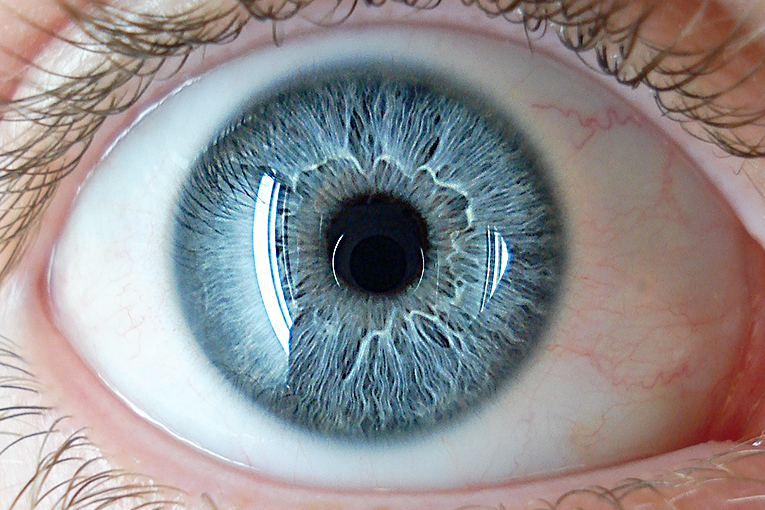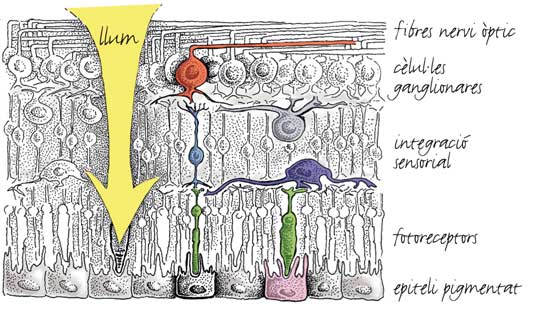
|
«Natural selection…does not plan for the future. It has no vision, no foresight, no sight at all. If it can be said to play the role of watchmaker in nature, it is the blind watchmaker.» Richard Dawkins, The Blind Watchmaker, 1986 You are reading these very words through a paragon of design, your eyes; an organ so perplexingly efficient that it outperforms human-made optical devices in many ways. Surely, such a feat of engineering must have been designed by an intelligent (divine) being. It is herein that lies the “rationale” (so to call it) of the ‘Intelligent design’ argument with which creationist have been attempting to bash Darwinian evolutionary theory for decades now. The feeling that nature’s beasts are so well designed, so beautifully “thought of” that they must have been, well, actually thought of, was undoubtedly a powerful notion before Darwin. Fortunately, things have changed over the last 150 years. Let’s do an experiment: |
«Despite the overwhelming spell of perfect design, nature is as beautiful as it is imperfect, as predictable as it is random» |
|
 |
||
|
1) Close your left eye and look closely at the black dot above from approximately 50 cm away, 2) slowly come closer to the screen/page without loosing focus of the dot until the diamond disappears, 3) move your head sideways and marvel at the experience of the incredible disappearing diamond! We have just empirically demonstrated your Punctum caecum, or blind spot. Don’t feel important, every vertebrate has it. Why? Well, the vertebrate retina is a cake-like structure: first, a layer of photoreceptors (the light sensors), second, various different coatings of cells that inter-connect and integrate adjacent photoreceptors (a first package of optical software) and, finally, a blanket of ganglion cells whose efferent axons (the cables) form a veneer that bundles up into the optic nerve. The optic nerve, in turn, transports all this information out of the eye and into the brain, where our optical CPU (in the occipital lobe) works its magic to re-compose it into the sharp, colour images that paint our subjective world. The problem, you see, is that the vertebrate retina is inside out, which means the axon layers are the first to greet incoming light while the actual light sensors lie secluded in the deepest layers. This awkward design forces light to penetrate a tangled forest of axons and different layers of cells before it hits the photoreceptors, and it necessarily implies that a gap must be left in the photoreceptor layer for the optic nerve to exit the eye. This gap, as you may have guessed already, is what produces our blind spot. We are not aware of it because our brain tricks us by filling it through sophisticated “Photoshoping” but, as we just proved, it’s there all right. |
||
 Mariano Collantes Mariano Collantes |
||
|
Absurd? Despite appearances, nature is ripe with this type of blunders and other design patches such as vestigial organs: to cite but a few, the eyes of the blind mole-rat (which are actually covered by a thick layer of skin), or the non-functional (but often deadly) human caecum, not to mention human ear muscles (some have them, some don’t, ever wondered what they’re for?). Why would an almighty, all perfect designer devise a camera with the sensors facing away from the light, eyes that can’t see, or a useless haphazardly killing caecum? It wouldn’t, of course. Mole-rats have eyes because their non-burrowing ancestors had eyes. As they adapted to the underground, Darwinian selection gradually worked on converting pre-existing eyes into a vestigial organ, thus avoiding the unnecessary costs of producing fully functional eyes. Vertebrates are stuck with an inverted retina and many humans still die today of appendicitis due to similar historical contingencies. In the case of the vertebrate retina, its inverted design appears the result of certain developmental constraints when it appeared in chordates, at a time and place were long term visual acuity was not was natural selection had in mind. But Darwinian selection bears the brute relentless force of millions after millions of generations, and is so efficient at cleaning-up the mess produced by such contingencies, so adept at casting the illusion of perfect design, that it is easy to miss these imperfections. For example, over time Darwinian selection has managed to improve the faulty original blueprint of an inverted retina to an almost perfect result. Yet, other animals have evolved better eyes from different developmental origins, reminding us of the true nature of evolution. Squids, for example, have camera eyes with front facing photoreceptors, no blind spots, and better visual acuity than cats! To conclude, we need not invoke god to explain the eye anymore than we need it to explain a rainbow, we need but Darwin and Newton. Despite the overwhelming spell of perfect design, nature is as beautiful as it is imperfect, as predictable as it is random. It is the blind, deaf, insentient working of evolution. After all, even creationists have a blind spot. Pau Carazo. Ramón y Cajal researcher at the University of Valencia and fellow researcher at the University of Oxford. |
||





